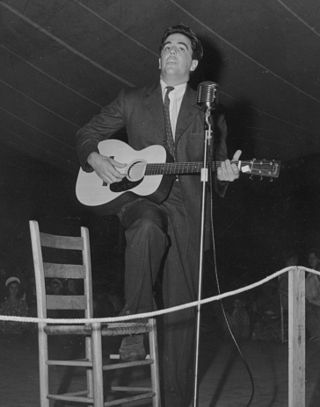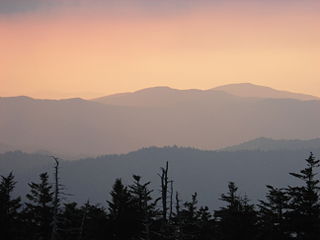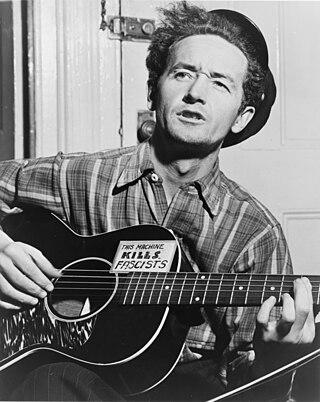Related Research Articles

Peter Seeger was an American folk singer and social activist. A fixture on nationwide radio in the 1940s, Seeger also had a string of hit records during the early 1950s as a member of the Weavers, notably their recording of Lead Belly's "Goodnight, Irene," which topped the charts for 13 weeks in 1950. Members of the Weavers were blacklisted during the McCarthy Era. In the 1960s, Seeger re-emerged on the public scene as a prominent singer of protest music in support of international disarmament, civil rights, counterculture, workers' rights, and environmental causes.

Alan Lomax was an American ethnomusicologist, best known for his numerous field recordings of folk music of the 20th century. He was a musician, folklorist, archivist, writer, scholar, political activist, oral historian, and film-maker. Lomax produced recordings, concerts, and radio shows in the US and in England, which played an important role in preserving folk music traditions in both countries, and helped start both the American and British folk revivals of the 1940s, 1950s, and early 1960s. He collected material first with his father, folklorist and collector John Lomax, and later alone and with others, Lomax recorded thousands of songs and interviews for the Archive of American Folk Song, of which he was the director, at the Library of Congress on aluminum and acetate discs.
The Weavers were an American folk music quartet based in the Greenwich Village area of New York City originally consisting of Lee Hays, Pete Seeger, Ronnie Gilbert, and Fred Hellerman. Founded in 1948, the group sang traditional folk songs from around the world, as well as blues, gospel music, children's songs, labor songs, and American ballads. The group sold millions of records at the height of their popularity, including the first folk song to reach No. 1 on popular music charts, their recording of Lead Belly's "Goodnight, Irene." Despite their popularity, the Weavers were blacklisted during much of the 1950s.
The Almanac Singers was an American New York City-based folk music group, active between 1940 and 1943, founded by Millard Lampell, Lee Hays, Pete Seeger, and Woody Guthrie. The group specialized in topical songs, mostly songs advocating an anti-war, anti-racism and pro-union philosophy. They were part of the Popular Front, an alliance of liberals and leftists, including the Communist Party USA, who had vowed to put aside their differences in order to fight fascism and promote racial and religious inclusiveness and workers' rights. The Almanac Singers felt strongly that songs could help achieve these goals.
"The Daemon Lover" – also known as "James Harris", "A Warning for Married Women", "The Distressed Ship Carpenter", "James Herries", "The Carpenter’s Wife", "The Banks of Italy", or "The House-Carpenter" – is a popular ballad dating from the mid-seventeenth century, when the earliest known broadside version of the ballad was entered in the Stationers' Register on 21 February 1657.
"Frog Went a-Courtin'" is an English-language folk song. Its first known appearance is in Wedderburn's Complaynt of Scotland (1549) under the name "The Frog cam to the Myl dur", though this is in Scots rather than English. There is a reference in the London Company of Stationers' Register of 1580 to "A Moste Strange Weddinge of the Frogge and the Mouse." There are many texts of the ballad; however the oldest known musical version is found in Thomas Ravenscroft's Melismata in 1611.

"On Top of Old Smoky" is a traditional folk song of the United States. As recorded by The Weavers, the song reached the pop music charts in 1951. It is catalogued as Roud Folk Song Index No. 414.

"The Great Silkie of Sule Skerry" or "The Grey Selkie of Sule Skerry" is a traditional folk song from Orkney and Shetland. Sule skerry being a far flung island of the Orkney archipelago. A woman has her child taken away by its father, the great selkie of Sule Skerry which can transform from a seal into a human. The woman is fated to marry a gunner who will harpoon the selkie and their son.
"The Knight and the Shepherd’s Daughter" is an English ballad, collected by Francis James Child as Child Ballad 110 and listed as number 67 in the Roud Folk Song Index.
"The Sweet Trinity", also known as "The Golden Vanity" or "The Golden Willow Tree", is an English folk song or sea shanty, listed as Child Ballad 286. The first surviving version, about 1635, was "Sir Walter Raleigh Sailing In The Lowlands ".
"Skip to My (The) Lou" is a popular American partner-stealing dance from the 1840s.

The American folk music revival began during the 1940s and peaked in popularity in the mid-1960s. Its roots went earlier, and performers like Josh White, Burl Ives, Woody Guthrie, Lead Belly, Big Bill Broonzy, Richard Dyer-Bennet, Oscar Brand, Jean Ritchie, John Jacob Niles, Susan Reed, Paul Robeson, Bessie Smith, Ma Rainey and Cisco Houston had enjoyed a limited general popularity in the 1930s and 1940s. The revival brought forward styles of American folk music that had in earlier times contributed to the development of country and western, blues, jazz, and rock and roll music.
"Mary Don't You Weep" is a Spiritual that originates from before the American Civil War – thus it is what scholars call a "slave song", "a label that describes their origins among the enslaved", and it contains "coded messages of hope and resistance". It is one of the most important of Negro spirituals. It is listed as number 11823 in the Roud Folk Song Index.
"Jack Monroe", also known as "Jack Munro", "Jack-A-Roe", "Jackaro", "Jacky Robinson", "Jackie Frazier" and "Jack the Sailor", is a traditional ballad which describes the journey of a woman who disguises herself as the eponymous character to board a sailing ship and save her lover, a soldier.
"Take This Hammer" is a prison, logging, and railroad work song, which has the same Roud number as another song, "Nine Pound Hammer", with which it shares verses. "Swannanoa Tunnel" and "Asheville Junction" are similar. Together, this group of songs are referred to as "hammer songs" or "roll songs". Numerous bluegrass bands and singers like Scott McGill and Mississippi John Hurt also recorded commercial versions of this song, nearly all of them containing verses about the legendary railroad worker, John Henry; and even when they do not, writes folklorist Kip Lornell, "one feels his strong and valorous presence in the song".

"Aunt" Samantha Bumgarner was an American early country and folk music performer and singer from Dillsboro, North Carolina. She won much praise for her work with the fiddle and banjo. In 1924, accompanied by guitarist Eva Davis, she traveled to New York City and recorded about a dozen songs for Columbia Records. The recordings are also notable for being the first use of a 5-string banjo on a recording. She was a yearly staple at Bascom Lamar Lunsford's Mountain Dance and Folk Festival from 1928 until shortly before her death.
"Cumberland Gap" is an Appalachian folk song that likely dates to the latter half of the 19th century and was first recorded in 1924. The song is typically played on banjo or fiddle, and well-known versions of the song include instrumental versions as well as versions with lyrics. A version of the song appeared in the 1934 book, American Ballads and Folk Songs, by folk song collector John Lomax. Woody Guthrie recorded a version of the song at his Folkways sessions in the mid-1940s, and the song saw a resurgence in popularity with the rise of bluegrass and the American folk music revival in the 1950s. In 1957, the British musician Lonnie Donegan had a No. 1 UK hit with a skiffle version of "Cumberland Gap".
"Farewell", also known as "Fare Thee Well", is a song by American singer-songwriter Bob Dylan. Dylan wrote the song in January 1963. He considered it for his third album, The Times They Are a-Changin', but only attempted a few takes during the album's first studio session. Dylan's earlier recordings of "Farewell" found their way onto various bootlegs, and a collection of demos that included the song was released in October 2010 on The Bootleg Series Vol. 9 – The Witmark Demos: 1962–1964.
"This Train", also known as "This Train Is Bound for Glory", is a traditional American gospel song first recorded in 1922. Although its origins are unknown, the song was relatively popular during the 1920s as a religious tune, and it became a gospel hit in the late 1930s for singer-guitarist Sister Rosetta Tharpe. After switching from acoustic to electric guitar, Tharpe released a more secular version of the song in the early 1950s.

"Pittsburgh Town", sometimes titled as "Pittsburgh" or "Pittsburgh is a Great Old Town", is a folk song written by Woody Guthrie and originally recorded by Pete Seeger. The song was written during a Pittsburgh, Pennsylvania stop on an Almanac Singers' tour; both Seeger and Guthrie were members of the band at this time. The song speaks of the labor and environmental problems that the city was facing in 1941, when the song was written. In the time since, environmental legislation has reduced the pollution problem that plagued Pittsburgh; because of this, the song's mentions of pollution in Pittsburgh have been sometimes been replaced with verses extolling the city.
References
- ↑ Maud Karpeles, editor, English Folk Songs from the Southern Appalachians' collected by Cecil J. Sharp; comprising two hundred and seventy-four songs and ballads with nine hundred and sixty-eight tunes, including thirty-nine tunes contributed by Olive Dame Campbell , two volumes (Oxford University Press, 1932).
- ↑ Neil V. Rosenberg; Charles K. Wolfe (2007). The Music of Bill Monroe. University of Illinois Press. p. 10. ISBN 978-0-252-03121-2.
- ↑ John A. Lomax and Alan Lomax; Ruth Crawford Seeger, Music Editor, Our Singing Country (New York: Macmillan, 1941), p. 302. The song headnote states: "No. 828. Aunt Molly Jackson, New York City. See Victor record No. 35838, for banjo accompaniment."
- ↑ Tony Russell, Country Music Records: A Discography, 1921-1942 (Oxford: Oxford University Press, 2004), p. 369
- ↑ Wayne Erbsen, Log Cabin Pioneers: Stories, Songs & Sayings (2001), p. 78.
- ↑ Tony Russell, Country Music Records: A Discography, 1921-1942 (Oxford: Oxford University Press, 2004), p. 826. See also the entry on "B. F. Shelton's Darlin Cora" on the Mudcat Café website.
- ↑ Grateful Dead Family Discography: Darling Corey
- ↑ Neil V. Rosenberg notes that folklorists had been aware since the 1930s that folk songs were being issued commercially on hillbilly records. He states that "hillbilly reissues were learned and performed by revival performers such as Pete Seeger, who credited his sources and suggested that people should copy them, not him." See Neil V. Rosenberg, Bluegrass: A History (University of Illinois Press, 2005) p. 172.
- ↑ Naxos: link Archived 2007-09-29 at the Wayback Machine .
- ↑ iTunes: Music Store
- ↑ Belafonte at Carnegie Hall, RCA Victor LSO-6006, 1959.
- ↑ https://danieldonato.bandcamp.com/track/darlin-cory-2